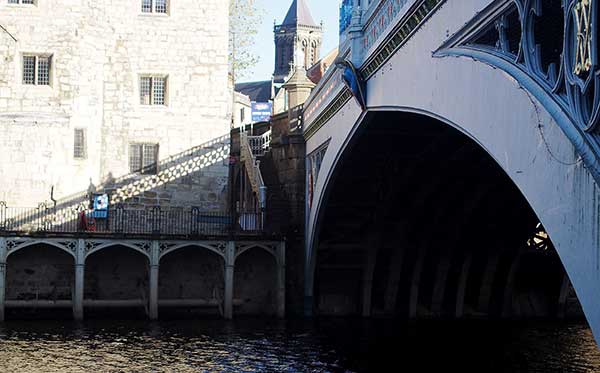
Lendal Bridge Week
 We’re halfway through the six-month ban on private vehicles using Lendal Bridge between 10.30am to 5pm. This week YorkMix is running a series of articles from people with very different responses to the trial. What do you think? Comment below, Tweet us @theyorkmix or go to our Facebook page
We’re halfway through the six-month ban on private vehicles using Lendal Bridge between 10.30am to 5pm. This week YorkMix is running a series of articles from people with very different responses to the trial. What do you think? Comment below, Tweet us @theyorkmix or go to our Facebook page
 Residents along one of York’s main roads are suffering the consequences of the trial, says Alison Sinclair
Residents along one of York’s main roads are suffering the consequences of the trial, says Alison Sinclair
It is to be hoped that someone in the council is keeping count of the number of vehicles displaced by the Lendal Bridge restrictions to Bishopthorpe Road and Skeldergate Bridge.
There have always been hold-ups along Bishopthorpe Road at some times of the day but nothing like what is happening these days.
Since the partial closure of Lendal Bridge, traffic is backed up along Bishopthorpe Road for much longer periods, sometimes all the way from the Tower Street roundabout on the City side of Skeldergate Bridge, through the Bishopthorpe Road shops and up the hill to Southlands Church, even to the Winning Post pub.
Traffic round the Nunnery Lane / Prices Lane one-way system used to flow quite smoothly but now moves in fits and starts, inches at a time, because of the number of vehicles diverted along Blossom Street merging with the increased traffic from Bishopthorpe Road.
The journey home from Askham Bar to The Groves via Bishopthorpe Road and the inner ring road now takes at least half an hour longer than it used to, and the trip from South Bank to Fossbank recently took about four times as long as it used to with traffic gridlocked in both directions between the Barbican and the Winning Post.
The relocated traffic makes existing problems in the alternative location as bad as, or worse than, the original
It seems counter productive to ban traffic from one place with the object of lessening congestion and pollution in that place, only for the traffic to relocate to another place, where conditions are already bad enough.
All that happens is that the problems transferred with the relocated traffic make existing problems in the alternative location as bad as, or worse than, the original.
In the case of the Nunnery Lane / Bishopthorpe Road one-way system conditions are considerably worse, crucially for the residents of the island of houses around which traffic gyrates, who will suffer the greater effect of increased emissions generated by all those stopping and starting vehicles.
Traffic figures for other main routes into the city have been made public but not those for Bishopthorpe Road.
You have to wonder whether the traffic planners are aware of the fact that Bishopthorpe Road is an alternate route into the City in place of Tadcaster Road, and that it leads more directly to Skeldergate Bridge than Tadcaster Road and Blossom Street.
Up-to-date traffic and air quality figures for this route could provide an interesting comment on the ill-conceived trial on Lendal Bridge.
- Alison Sinclair is an historian and conservationist
- For all our Lendal Bridge stories, click here
